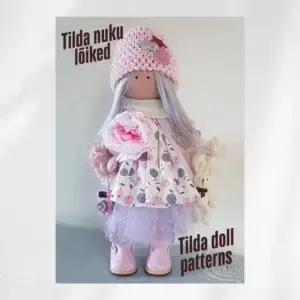Tilda doll – history, character, and making
The Tilda doll is a soft, handmade cloth doll originally designed by Norwegian artist Tone Finnanger in 1999. The original Tilda dolls featured long legs, a slender body shape, a minimalist facial expression, and a romantic style. Today, the term Tilda doll has broadened to include various handmade cloth dolls with different shapes and styles that share soft lines, delicate details, and a romantic or nostalgic look.
Making a Tilda doll
Creating a Tilda doll is a process full of creativity and craftsmanship. Cotton or linen fabric is typically used to ensure a natural and high-quality appearance. The process includes the following steps:
Pattern preparation – the body, arms, and legs are cut from fabric according to the pattern.
Sewing and stuffing – the body parts are sewn together and filled with soft polyester fibre to give the doll shape.
Adding the face – Tilda dolls are known for their minimalist faces, often represented by small dot eyes, though more detailed versions now also exist.
Clothing and accessories – Tilda dolls wear romantic, vintage-style outfits decorated with lace, embroidery, and other fine details.
Tilda dolls have become popular as decorative pieces, nostalgic gifts, and cherished handmade items that carry a Scandinavian sense of simplicity and timeless elegance. Whether in a classic or more modern form, a Tilda doll always brings warmth and personality.
Tilda doll – a romantic and delicate handmade doll in every form!

